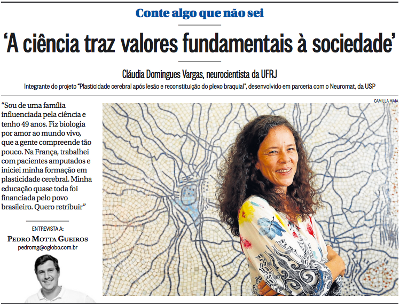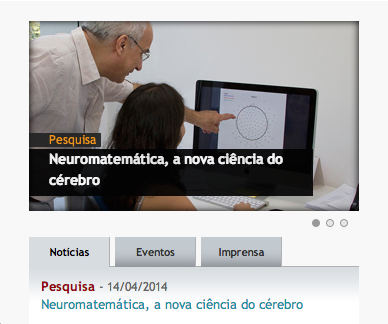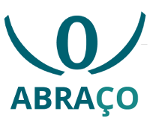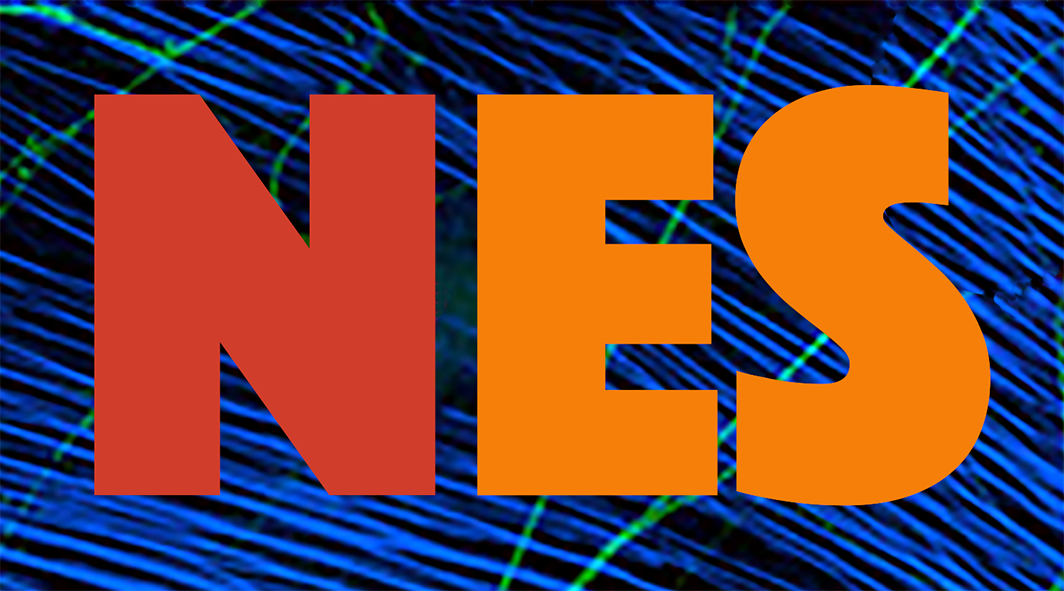
Media coverage on the rise for neuromathematics
Apr 24, 2014
The Research, Innovation and Dissemination Center for Neuromathematics (NeuroMat) has contributed to spreading public interest and media coverage on issues pertaining to a renewed theoretical understanding of the brain. This contribution remains part of NeuroMat's dissemination strategy, which aims at bridging the gap between scientific production and public awareness. NeuroMat is coordinated by Prof. Antonio Galves and was established in 2013 at the University of São Paulo (USP), with funding from the São Paulo Research Foundation (FAPESP).
 |
The research and clinical application of neuromathematics on neurological injuries, the evolving frontier of neuroscientific and mathematical research agendas and the scientific challenges of establishing a new mathematical field have been the object of recent media articles in Brazil. Prof. Cláudia Domingues Vargas was interviewed by journalist Pedro Motta Gueiros, from O Globo, a leading Brazilian newspaper. The title of the piece that can be read here in Portuguese is “Science reinforces fundamental values in society.”
A large article on the way mathematicians and neuroscientists are working together to understand and predict neural functioning was published by Revista Pesquisa Fapesp, one of the most important Brazilian scientific-diffusion magazines. The author of the piece, that may be found here in Portuguese, is Igor Zolnerkevic. Revista Pesquisa Fapesp is currently producing a documentary on neuromathematics that is expected to be released shortly on its website.
 |
“Neuromathematics, the new science of the brain” was the title of a report by Aline Naoe, from USP''s News Agency. This report, which can be found here in Portuguese, was the featured highlight at USP's webpage and eventually became one of the most widely shared piece from the university's agency in 2014 so far. NeuroMat was also the main subject of an article at the Federal University of Ouro Preto (UFOP)'s News Agency, which may be found here in Portuguese, and in other institutional venues, including the Brazilian Academy of Sciences (ABC).
Articles on the importance of public databases and the innovative aspects of neuromathematics are expected to be released on Brazilian magazines in the next months. NeuroMat researchers are also hoping to contribute to a scientific-diffusion magazine for teenagers bringing up the discussion of how mathematics and brain science can work along.
Communication strategy
Increasing media coverage remains an objective in a broader communication and dissemination strategy for neuromathematics. Such strategy includes interdisciplinary workshops, filmmaking activities, courses for secondary school teachers, seminars for medical and clinical workers and exhibitions. Several members of the NeuroMat team are, or have been, active in these programs.
“There are two interrelated challenges for scientific dissemination: to provide good training to professional disseminators, especially journalists, but also scientists, who have to learn how to talk about their work to broad audiences, and to provide good training to people in general so that they are able to understand science and think scientifically," said Prof. Gilberto Xavier, from USP's Institute of Biosciences and a member of NeuroMat's dissemination team. Prof. Xavier participated at a joint meeting of FAPESP's Research, Innovation and Dissemination Centers (known in Brazil as CEPIDs), in Ribeirão Preto, in April, 24 and 25. "Scientists from the CEPIDs agreed that they share the responsibility of spreading scientific literacy, that is, training people, especially children and teens, on how to solve simple experimental problems, develop hypothesis testing, collect data, reach conclusions and generate new hypotheses, even in a basic manner, and that such training would have general positive impacts in educational and social terms."
The goals of the meeting in Ribeirão Preto were twofold. First, members of dissemination teams from several research centers shared their experiences in spreading out scientific knowledge. These experiences included educational, media-oriented and artistic productions. A special focus was put on stimulating and improving the use of social-media technologies as channels to reaching publics that were not previously targeted. Second, participants at the event discussed activities that could potentially involve several research centers, such as teaching in technical schools, science journalism training and building a joint and impactful scientific-dissemination internet portal.
NeuroMat's diffusion strategy relies on a renewed understanding of how scientific knowledge may be made accessible to a broader public, said Prof. Galves. "We are too often prone to just reproduce knowledge that is already available elsewhere; we expect to establish diffusion tools that spread out what is at the edge of science, which is the field in which neuroscience and theoretical mathematics converge, and this is NeuroMat's ongoing challenge."
This piece is part of NeuroMat's Newsletter #3. Read more here
Share on Twitter Share on Facebook| NeuroCineMat |
|---|
|
Featuring this week: |
| Newsletter |
|---|
|
Stay informed on our latest news! |
| Follow Us on Facebook |
|---|




